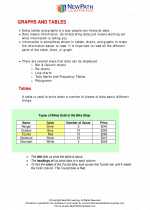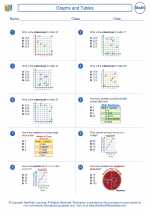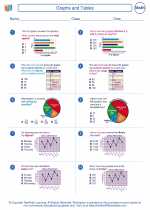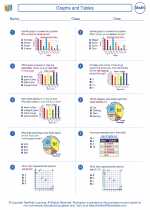Rotation
Rotation in mathematics refers to the movement of a figure around a fixed point. The fixed point is called the center of rotation. When a figure is rotated, its size and shape remain the same, but its position changes.
Key Concepts
- Center of Rotation: The fixed point around which the figure is rotated.
- Angle of Rotation: The amount of rotation, measured in degrees, from the original position to the final position of the figure.
- Direction of Rotation: Clockwise or counterclockwise rotation, determined by the direction in which the figure moves around the center of rotation.
Types of Rotations
There are two main types of rotations:
- Clockwise Rotation: The figure moves in the direction of a clock's hands.
- Counterclockwise Rotation: The figure moves in the opposite direction to a clock's hands.
Rotation Notation
Rotations can be described using notation. For example, a 90-degree counterclockwise rotation of a figure F around point P can be denoted as "RP,90°(F)".
Properties of Rotations
Some important properties of rotations include:
- Rotating a figure multiple times around the same center results in cumulative rotations.
- Rotating a figure 180 degrees results in its reflection over the center of rotation.
Study Guide
When studying rotations, it is important to practice the following:
- Identifying the center of rotation in a given figure.
- Determining the angle and direction of rotation required to move a figure to a specific position.
- Understanding the effects of multiple rotations on a figure.
- Using rotation notation to describe and perform rotations.
◂Math Worksheets and Study Guides Fifth Grade. Graphs and Tables
Study Guide Graphs and Tables
Graphs and Tables  Worksheet/Answer key
Worksheet/Answer key Graphs and Tables
Graphs and Tables  Worksheet/Answer key
Worksheet/Answer key Graphs and Tables
Graphs and Tables  Worksheet/Answer key
Worksheet/Answer key Graphs and Tables
Graphs and Tables 

 Worksheet/Answer key
Worksheet/Answer key
 Worksheet/Answer key
Worksheet/Answer key
 Worksheet/Answer key
Worksheet/Answer key

The resources above cover the following skills:
Geometry (NCTM)
Specify locations and describe spatial relationships using coordinate geometry and other representational systems.
Make and use coordinate systems to specify locations and to describe paths.
Connections to the Grade 5 Focal Points (NCTM)
Data Analysis: Students apply their understanding of whole numbers, fractions, and decimals as they construct and analyze double-bar and line graphs and use ordered pairs on coordinate grids.